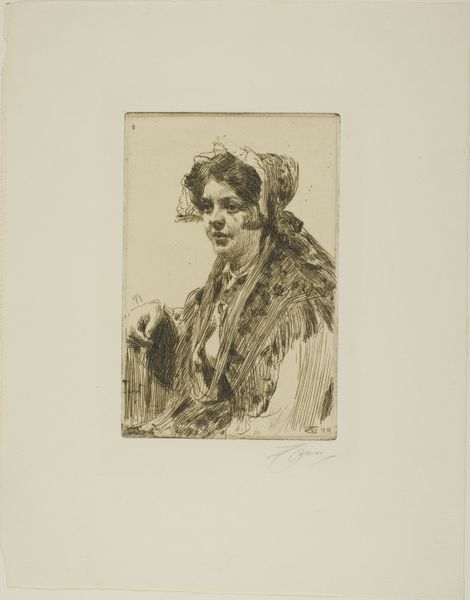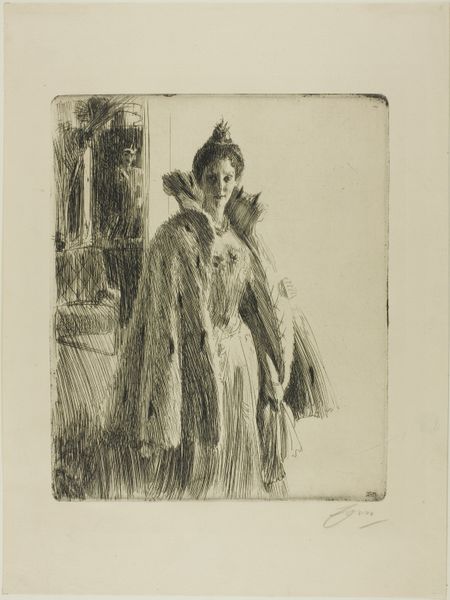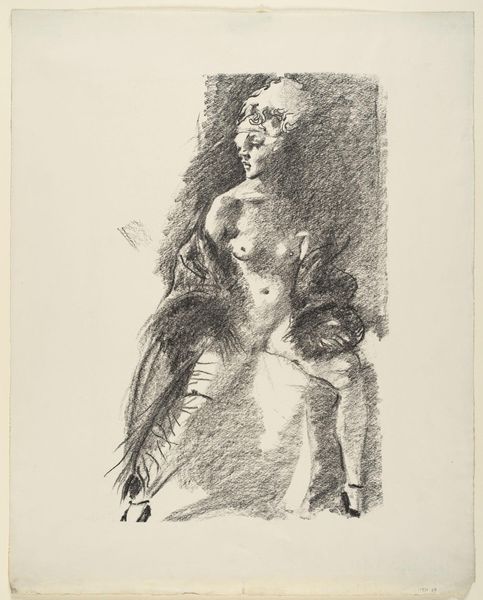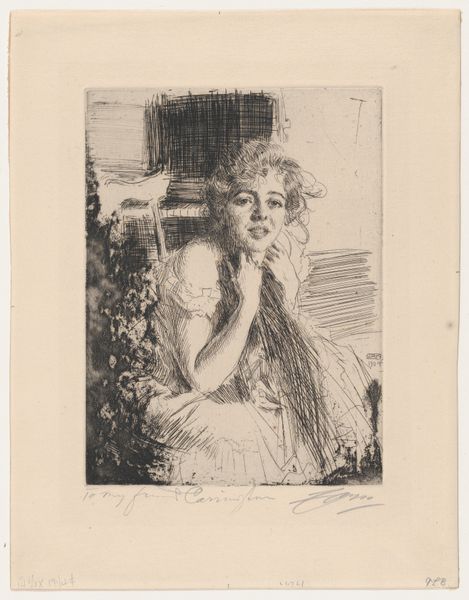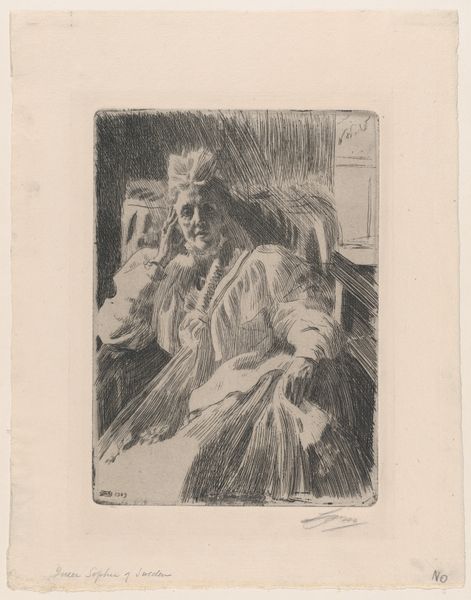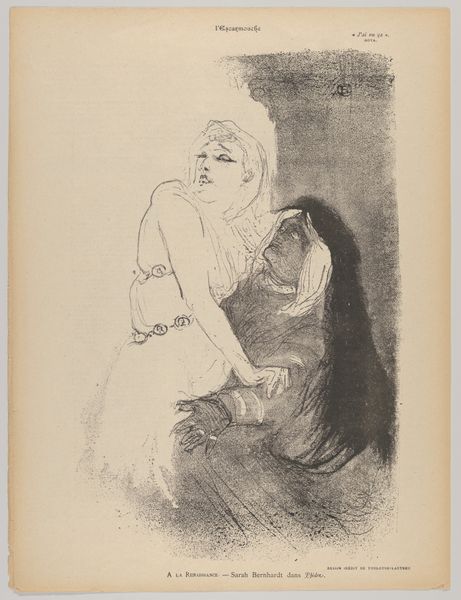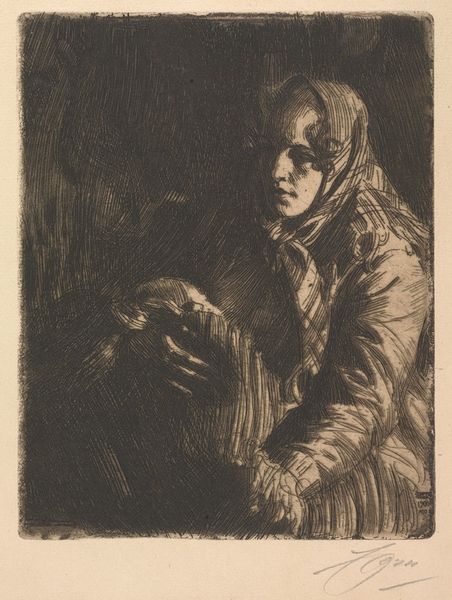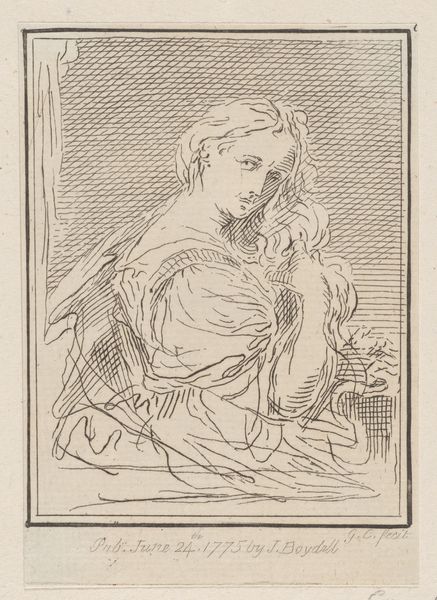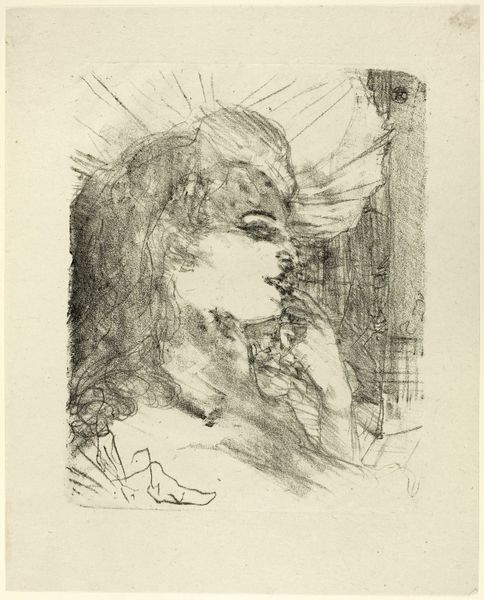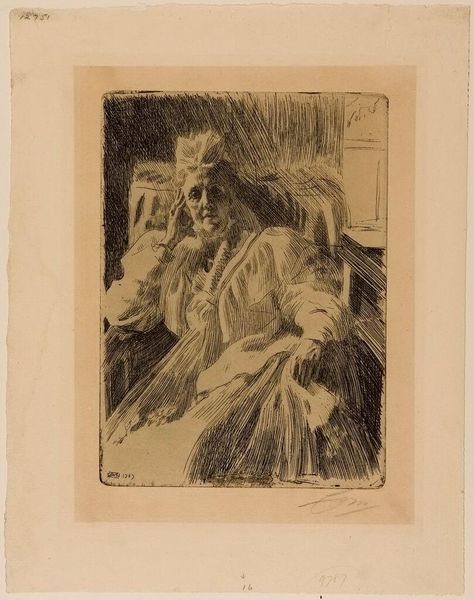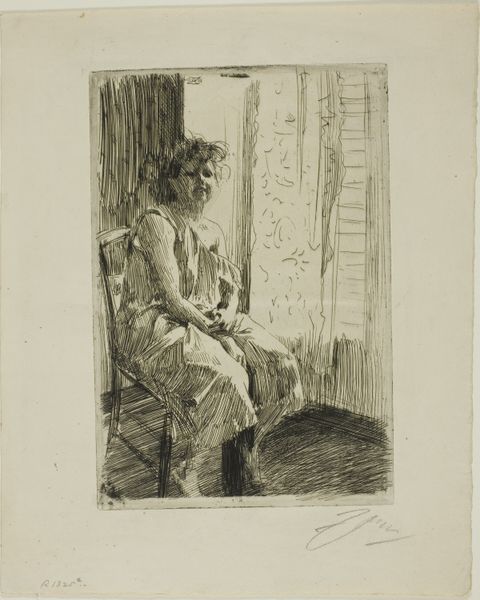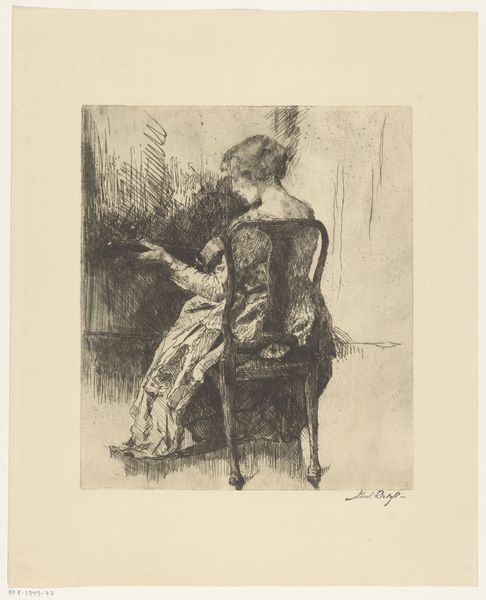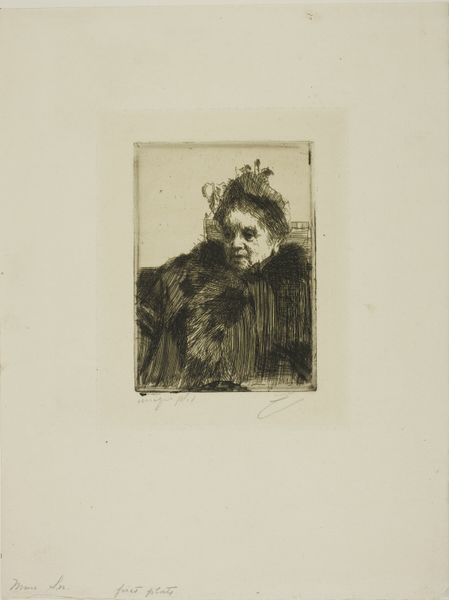
drawing, print, etching, paper
#
portrait
#
drawing
#
art-nouveau
# print
#
etching
#
paper
#
realism
Dimensions: 247 × 196 mm (image/plate); 388 × 258 mm (sheet)
Copyright: Public Domain
Editor: Here we have Anders Zorn’s 1900 etching, "Maja von Heijne," currently housed in the Art Institute of Chicago. It’s rendered on paper, creating a very intimate, almost moody atmosphere. All that dark fur really draws me in. What do you see in this piece, from your perspective? Curator: Considering Zorn's social circles, particularly his association with wealthy patrons, this piece becomes quite interesting. Etchings were becoming increasingly popular, and offered a democratized form of portraiture. He was part of constructing and reflecting the bourgeois ideals. This contrasts to how the sitter engages with us, the public - does her gaze confront or retreat? Editor: I hadn’t considered that angle – democratized portraiture for the bourgeoisie! It’s interesting because the "realism" tag made me assume it was only striving for truth, and nothing about societal commentary. The intensity of her expression makes more sense now, it really makes me wonder what was expected of women like her during that time? Curator: Exactly! And that gets us to a central issue: how much did artistic choices play in communicating that supposed authenticity, that realism, that truth you pointed out? Zorn presents an individual, but he’s also shaping a type. Think of the art nouveau elements present, they indicate status and luxury as markers of social belonging. Editor: So it's not just about *representing* Maja, but about fitting her into a societal narrative? I can see now that the presentation plays just as large of a role, maybe larger, than the actual person. That changes the feeling of intimacy the piece has, almost a stage performance. Curator: Precisely. Etchings like this contributed to constructing and reinforcing societal expectations and power dynamics, revealing that portraits aren't neutral reflections but active participants in cultural discourse. Editor: Thanks. This helped see all the layers that shape a piece, even what feels so individual as a portrait!
Comments
No comments
Be the first to comment and join the conversation on the ultimate creative platform.
